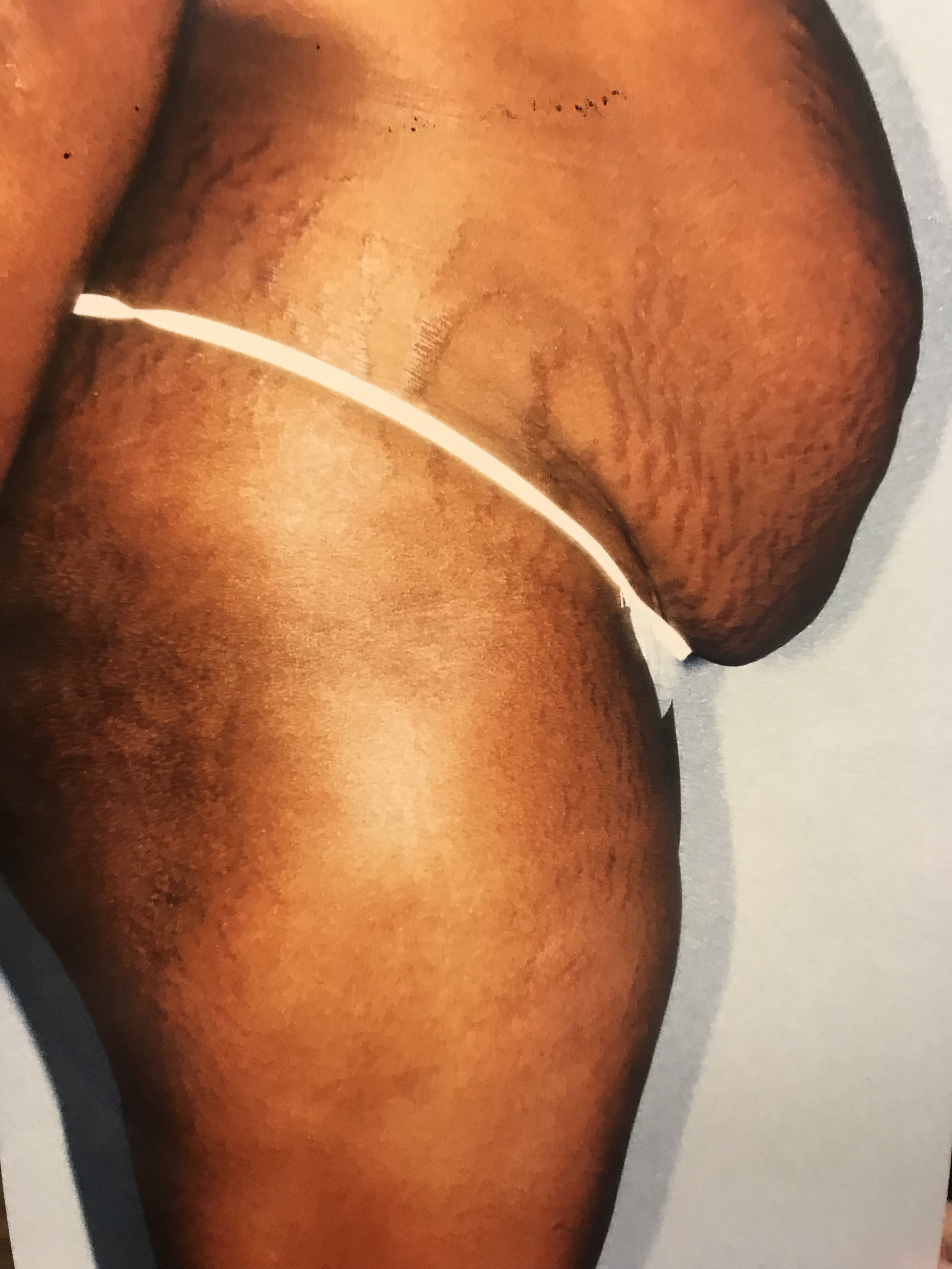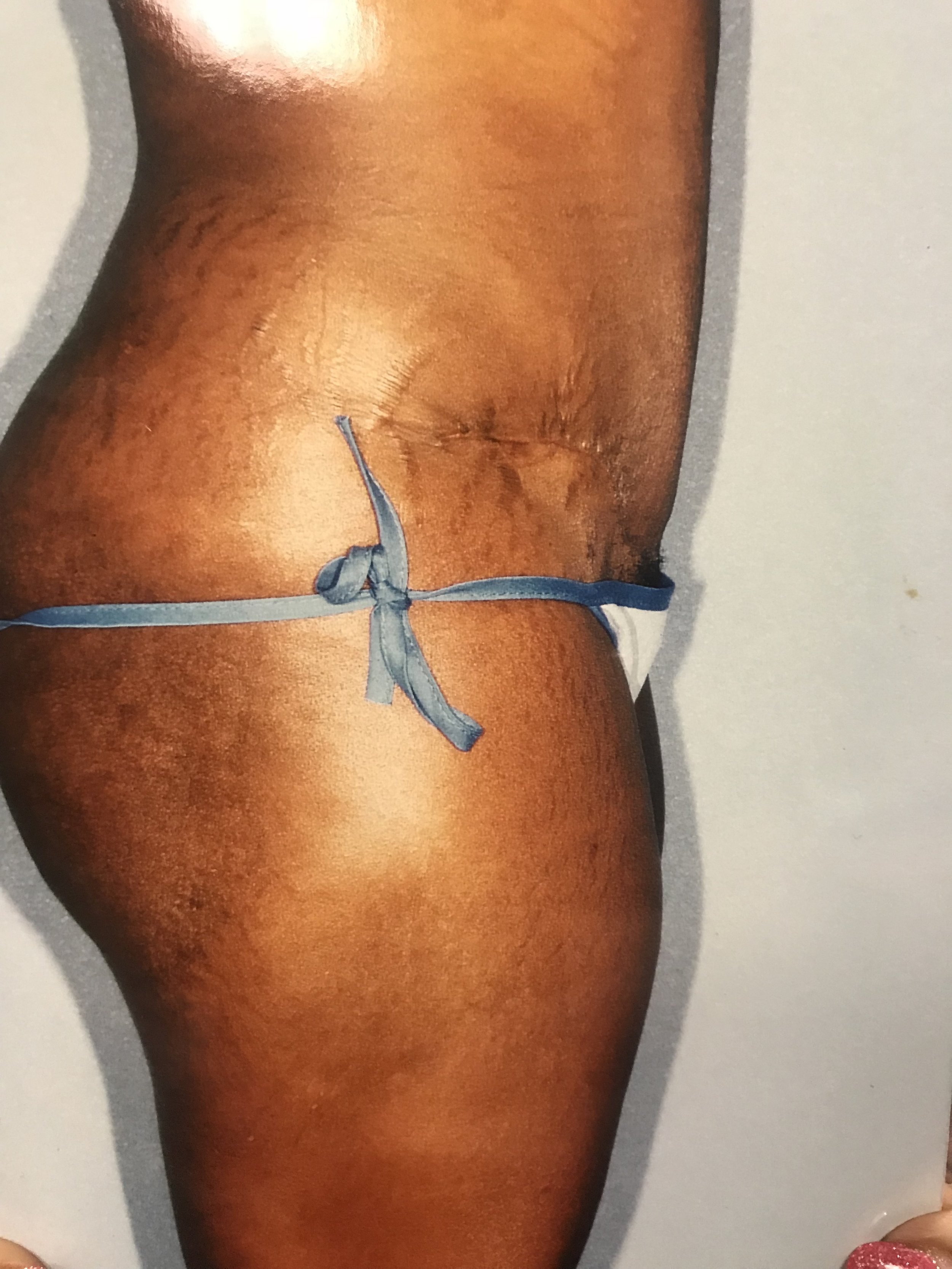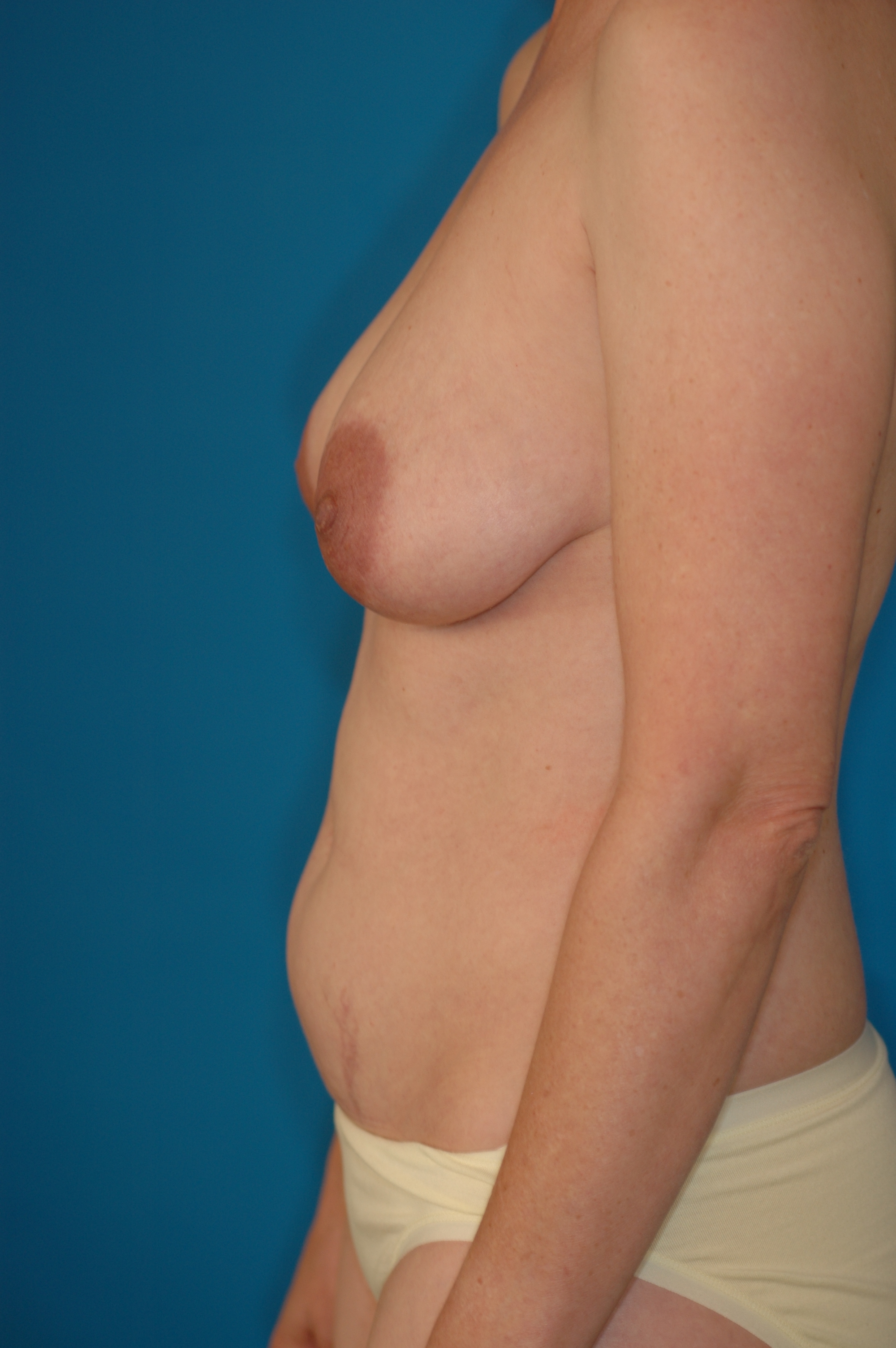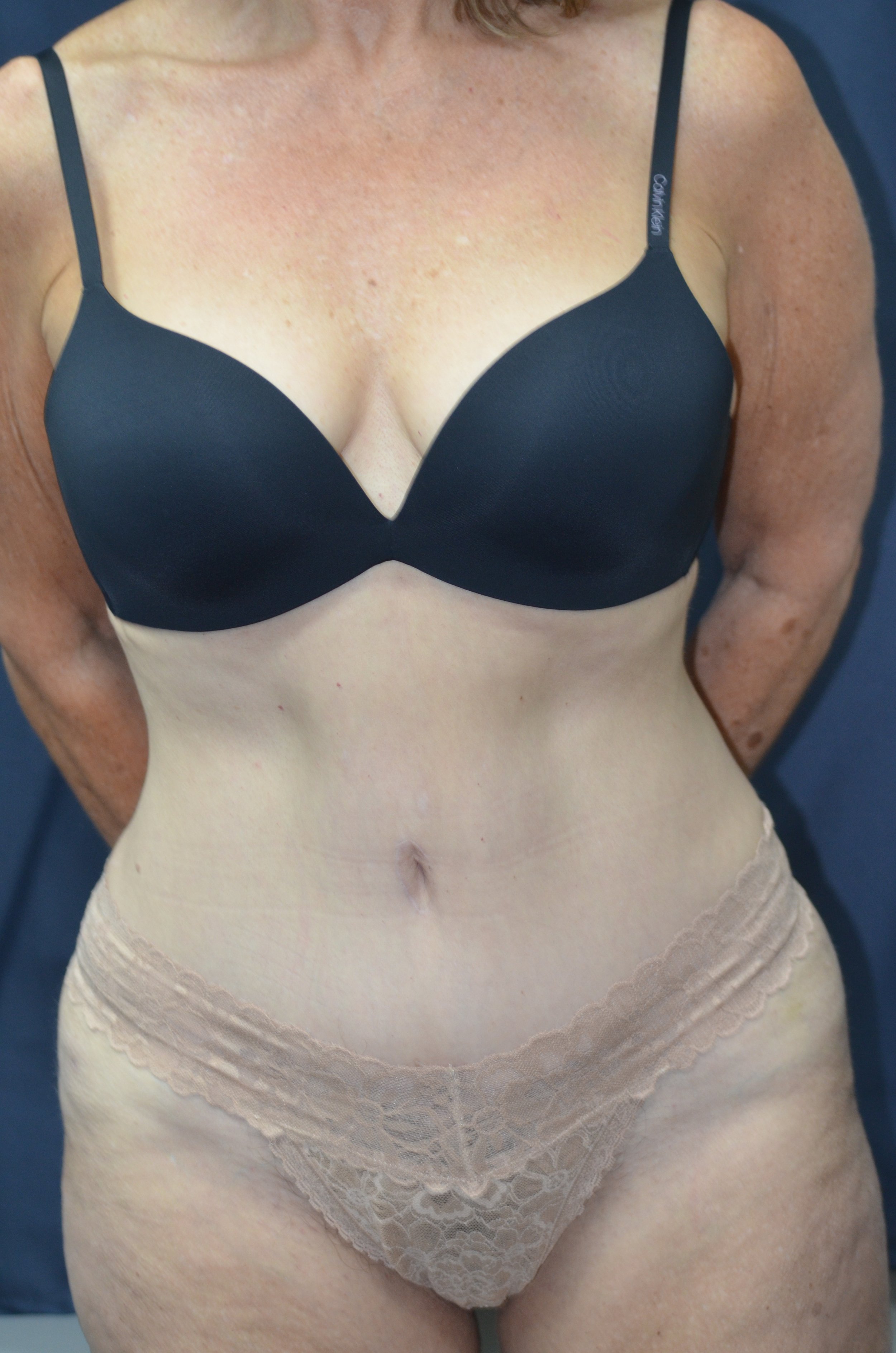Tummy Tuck Surgery (Abdominoplasty)
Tummy tuck treats stretched out abdominal skin.
After surgery, you will have a firmer, flatter abdomen.
What is a tummy tuck?
Tummy tuck surgery, also known as abdominoplasty, removes excess fat and skin and, in most cases, restores weakened or separated muscles creating an abdominal profile that is smoother and firmer.
Who Might Benefit from a Tummy Tuck?
The decision to have any cosmetic procedure is personal, and patients choose to have tummy tucks for a variety of reasons. The best candidates are at or near their ideal body weight, are non-smokers in good health, and have realistic expectations about what surgery can achieve for them. If any of the following describe you, a tummy tuck is an option to consider:
Diet & exercise have helped you lose weight, but your abdomen still protrudes and lacks tone.
Your abdominal muscles and skin are stretched and sagging following pregnancy.
After losing significant amounts of weight, you now have loose, excess skin hanging around your belly.
You have always had a belly that “sticks out,” even though you are in very good shape.
A tummy tuck can help patients in any of these situations address what they don’t like about their shape and achieve a firmer, flatter abdomen.
If you're considering abdominoplasty...
Abdominoplasty is a major surgical procedure to remove excess skin and fat from the middle and lower abdomen and to tighten the muscles of the abdominal wall. The procedure can dramatically reduce the appearance of a protruding abdomen. But bear in mind, it does produce a permanent scar, which, depending on the extent of the original problem and the surgery required to correct it, can extend from hip to hip.
ALL SURGERY CARRIES SOME UNCERTAINTY AND RISK
Thousands of abdominoplasties are performed successfully each year. When done by a qualified plastic surgeon who is trained in body contouring, the results are generally quite positive. Nevertheless, there are always risks associated with surgery and specific complications associated with this procedure.
Post-operative complications such as infection and blood clots are rare, but can occur. Infection can be treated with drainage and antibiotics, but will prolong your hospital stay. You can minimize the risk of blood clots by moving around as soon after the surgery as possible.
Poor healing, which results in conspicuous scars, may necessitate a second operation. Smokers should be advised to stop, as smoking may increase the risk of complications and delay healing.
You can reduce your risk of complications by closely following your surgeon's instructions before and after the surgery, especially with regard to when and how you should resume physical activity.
PLANNING YOUR SURGERY
In your initial consultation, your surgeon will evaluate your health, determine the extent of fat deposits in your abdominal region, and carefully assess your skin tone. Be sure to tell your surgeon if you smoke, and if you're taking any medications, vitamins, or other drugs.
Be frank in discussing your expectations with your surgeon. He or she should be equally frank with you, describing your alternatives and the risks and limitations of each.
If, for example, your fat deposits are limited to the area below the navel, you may require a less complex procedure called a partial abdominoplasty, also know as a mini-tummy tuck, which can often be performed on an outpatient basis. You may, on the other hand, benefit more from partial or complete abdominoplasty done in conjunction with liposuction to remove fat deposits from the hips, for a better body contour. Or maybe liposuction alone would create the best result.
In any case, your surgeon should work with you to recommend the procedure that is right for you and will come closest to producing the desired body contour.
During the consultation, your surgeon should also explain the anesthesia he or she will use, the type of facility where the surgery will be performed, and the costs involved. In most cases, health insurance policies do not cover the cost of abdominoplasty, but you should check your policy to be sure.
Before + After Gallery
This is a collection of before and after pictures of Tummy Tucks performed by Dr. Tittle.
This 35 year old patient with hereditary large breasts and a larger frame is ecstatic with her results from a tummy tuck, breast reduction, flank and bra roll liposuction by Dr. Tittle. Her neck and back pain is markedly better from the reduction as well.
This before and after is a 45 year old mother who has had 2 children and came to Dr. Tittle for a tummy tuck (abdominoplasty) and flank/hip liposuction.
Tummy tuck and small amount of liposuction multiple areas including flanks and bra roll.
9 months post-surgery, this Mommy Makeover is the trifecta - breast augmentation, tummy tuck, and liposuction!
35 year old patient 14 months after breast augmentation and tummy tuck.
65 year old patient 7 months after abdominoplasty
65 year old patient who is 6 months after abdominoplasty by Dr. Tittle
PREPARING FOR YOUR SURGERY
Your surgeon will give you specific instructions on how to prepare for surgery, including guidelines on eating and drinking, smoking, and taking or avoiding certain vitamins, and medications.
If you smoke, plan to quit at least one to two weeks before your surgery and not to resume for at least two weeks after your surgery. Avoid overexposure to the sun before surgery, especially to your abdomen, and do not go on a stringent diet, as both can inhibit your ability to heal. If you develop a cold or infection of any kind, your surgery will probably be postponed.
Whether your surgery is done on an outpatient or inpatient basis, you should arrange for someone to drive you home after your surgery, and to help you out for a day or two after you leave the hospital, if needed.
WHERE YOUR SURGERY WILL BE PERFORMED
Many surgeons perform both partial and complete abdominoplasties in an outpatient surgical center or an office-based facility. Others prefer the hospital, where their patients can stay for several days.
TYPES OF ANESTHESIA
Your doctor may select general anesthesia, so you'll sleep through the operation.
Other surgeons use local anesthesia, combined with a sedative to make you drowsy. You'll be awake but relaxed, and your abdominal region will be insensitive to pain. (However, you may feel some tugging or occasional discomfort.)
THE SURGERY
Complete abdominoplasty usually takes two to five hours, depending on the extent of work required. Partial abdominoplasty may take an hour or two.
Most commonly, the surgeon will make a long incision from hipbone to hipbone, ,just above the pubic area. A second incision is made to free the navel from surrounding tissue. With partial abdominoplasty, the incision is much shorter and the navel may not be moved, although it may be pulled into an unnatural shape as the skin is tightened and stitched.
Next, the surgeon separates the skin from the abdominal wall all the way up to your ribs and lifts a large skin flap to reveal the vertical muscles in your abdomen. These muscles are tightened by pulling them close together and stitching them into their new position. This provides a firmer abdominal wall and narrows the waistline.
The skin flap is then stretched down and the extra skin is removed. A new hole is cut for your navel, which is then stitched in place. Finally, the incisions will be stitched, dressings will be applied, and a temporary tube may be inserted to drain excess fluid from the surgical site.
In partial abdominoplasty, the skin is separated only between the incision line and the navel. This skin flap is stretched down, the excess is removed, and the flap is stitched back into place.
AFTER YOUR SURGERY
For the first *few days, your abdomen will probably be swollen and you're likely to feel some pain and discomfort which can be controlled by medication. Depending on the extent of the surgery, you may be released within a few hours or you may have to remain hospitalized for two to three days.
Your doctor will give you instructions for showering and changing your dressings. And though you may not be able to stand straight at first, you should start walking as soon as possible.
Surface stitches will be removed in *five to seven days, and deeper sutures, with ends that protrude through the skin, will come out in *two to three weeks. The dressing on your incision may be replaced by a support garment.
GETTING BACK TO NORMAL
It may take you weeks or months to feel like your old self again. If you start out in top physical condition with strong abdominal muscles, recovery from abdominoplasty will be much faster. Some people return to work after two weeks, while others take three or four weeks to rest and recuperate.
Exercise will help you heal better. Even people who have never exercised before should begin an exercise program to reduce swelling, lower the chance of blood clots, and tone muscles. Vigorous exercise, however, should be avoided until you can do it comfortably.
Your scars may actually appear to worsen during the first three to six months as they heal, but this is normal. Expect it to take nine months to a year before your scars flatten out and lighten in color. While they'll never disappear completely, abdominal scars will not show under most clothing, even under bathing suits.
YOUR NEW LOOK
Abdominoplasty, whether partial or complete, produces excellent *results for patients with weakened abdominal muscles or excess skin. And in most cases, the *results are long lasting, if you follow a balanced diet and exercise regularly.
If you're realistic in your expectations and prepared for the consequences of a permanent scar and a lengthy recovery period, abdominoplasty may be just the answer for you.
Patient Reviews
“Dr. Tittle is an Amazing person as well as an amazing surgeon. He made me feel so comfortable with my whole procedure. I had no problem asking any questions or voicing concerns. He is very knowledgeable and friendly. I went in to exchange my large implants to smaller and had been told by numerous surgeries it really couldn’t be done and look ok. Dr. Tittle didn’t even bat an eye and made a plan and helped me! This is my fourth breast operation and I wish I would’ve found him first! He is a life saver and his work is AMAZING! My surgery ended up looking perfect!!! I love him and and his entire practice!”
“We can’t give Dr. Tittle higher praise - from our initial meeting, through pre-op, surgery and post-op, he and his staff have been most attentive, calming - and most of all, immediately available to answer questions by phone, text, whatever. The hospital was clean, comfortable and had great food too. We did our homework on surgeons up front, and Dr. Tittle has delivered very well. He is obviously very skilled at his craft and while taking care of the medical part intently, he is also quite attentive to his patients emotions and anxieties. We would highly recommend him to similarly situated patients.”
“First I would like to say thank you to Dr. Tittle and his staff. Everyone has been so kind and helpful with eveything. I am so pleased with my results, I had a tummy tuck and he also repaired the muscles, and used a pain medication that was injected in the muscles during surgery that helps tremendously with the soreness. I was able to move around the same day that i had the surgery, because it worked that good. It has only been a week and I’m glad to say that i’m very pleased! Dr. Tittle has excellent bed side manner as well as his staff, they are eager to supply your needs and has checked on me to see if there was anything that they could do to make me comfortable. I would highly recommend Dr. Tittle if you are looking for a board certified plastic surgeon! He’s very good at what he does and he loves making you even more gorgeous! Thanks Dr. Tittle and Staff.”




























